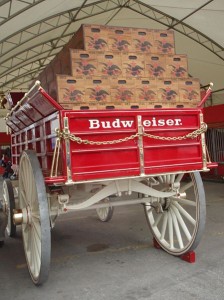HR: How is a craft brewer distinct from a macrobrewer? Who are the largest players in the craft brewing industry?
EH: Craft brewers are small and independent brewers who produce less than 6 million barrels of beer per year. Craft brewers typically focus on serving local communities and use innovation to create exciting new beers rather than relying on one or two flagship beers to drive their business. The top three largest players in the craft brewing industry are Boston Brewing Co., Sierra Nevada Brewing Co. and New Belgium Brewing Co., which are known for Samuel Adams, Sierra Nevada Pale Ale and Fat Tire respectively. On the other hand, macrobrewers such as MillerCoors and Anheuser-Busch produce over 6 million barrels per year and sell their product across the country with huge marketing campaigns.

HR: Why are craft brews making a comeback in the US?
EH: Consumer demand coupled with passionate brewers are the driving forces behind the return of craft beer. Consumers are loyal to their favorite local brewery and increasingly receptive to new beers altogether. Evidence shows they are willing to pay a little more money for a six pack of a new craft brew rather than the universal macrobrew. On the production side, brewers are interested in experimenting with unconventional and exciting flavors of beers like Oatmeal Raisin Stouts or Double IPA’s.

HR: Can you give us an idea about the US’s total beer production? Who are the major players and how much are they undercut by craft brews?
EH: In terms of total market share there are two major players, Anheuser-Busch and MillerCoors, that represent 75% of the US beer industry. Craft brews are slowly expanding, earning 14% of market share in 2013, up from just 5% of the total market in 2012. I think it’s remarkable that there are thousands of craft brewers comprising a little over 10% while two giant corporations comprise over 50% of the industry. Average beer production in the United States has been steadily decreasing since the early 1990s. In 2012, the total beer production in the U.S. was about 196 million barrels.
HR: Let’s talk about beer consumption now. How has this changed in light of substitute alcohol categories like wine and ciders?
EH: According to a Gallup Poll in 2013, the US’s demand for beer has been decreasing since the early 1990s, while the demand for both wine and hard cider has increased. Though overall beer consumption has been declining, the craft beer category has continued to grow. Hard cider is perceived as a substitute product that is anticipated to have a large impact on the craft brewing industry in five to ten years.
HR: Your thesis mentions suspicion about the craft brewing industry becoming an “asset bubble”. Can you explain what this means?
EH: Essentially an asset bubble is when the price of something is higher than its true value due to overly optimistic expectations about the future. With regards to the craft brewing industry, the asset bubble does not quite fit what might be happening. Instead, I examined if a quantity bubble was forming. In other words, I investigated whether the market is becoming over-saturated with brewers and would cause exit from the market.
HR: So is a bubble forming?
EH: I concluded there isn’t a bubble forming in the market, as the growth in the industry has been steady but not unusually excessive. Since craft breweries are very locally focused, there are many places around the country where only a few breweries have opened up, such as in Mississippi and North Dakota. Some regions, such as the Seattle-Tacoma and Boulder-Denver area in Colorado, have many breweries and therefore, those markets may not be able to accommodate for more entry.
HR: What’s your favorite craft brew?
EH: As a beginner in the consumption of craft brews, I like trying new beers each time I purchase beer. Recently, I enjoyed the Quilter’s Irish Death from Iron Horse Brewery from Eastern Washington.

Cheers!
Three new breweries opened up in the past year in Memphis: Wiseacre being my preference. My guess though is this has something to do with the recent easing of alcohol laws here in the Southeast. There’s no lack of demand, and a city the size of Memphis could do with more breweries.
I had not heard about the anticipation of consumption by hard cider, but I was aware of some rumblings in the micro-distilling markets in the Kansas City area (http://inkkc.com/content/entrepreneurial-spirits-thrive-at-micro-distilleries/) and around Memphis (http://time.com/30647/jack-daniels-tennessee-whiskey-regulations-may-be-repealed/). Assuming you want legal whiskey that is, and don’t want to take a chance on that shady looking bottle coming from the back of a Ford parked off a dirt road.
I think a good continuation of the topic (if not addressed in the thesis already) would be the affect of regulation and taxation on the availability of microbreweries. How much does it cost to get a license, what are the tax rates, are there any other requirements (they must also serve food, they must close on Sunday, etc.)?
Also this:
http://www.beeronomics.org/